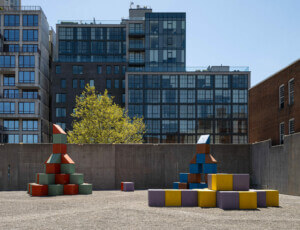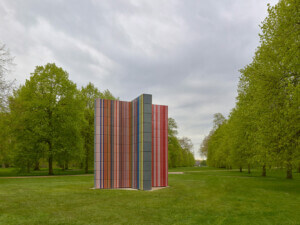There aren’t many elevator lobbies in New York like artist Richard Haas’s. “A studio assistant painted this when we were short on work,” Haas, 87, told AN on a recent crisp Manhattan winter morning during a visit to learn about his 1974 mural on the corner of Prince and Greene streets, which was repainted this fall.
Richard Haas moved his home studio from Broome Street to the Garment District 40 years ago. Since then, he’s been dubbed “the great architectural muralist of our time” by critic Paul Goldberger for his public art in New York, Boston, Cincinnati, Miami, Phoenix, Portland, and St. Louis. The vestibule outside his workspace is emblematic of his public art portfolio: It’s lacquered with a historicist mural that evokes Leonardo da Vinci’s Cité Idéale (1484), or maybe Andrea Palladio’s Teatro Olimpico (1585). The cozy studio he shares with his wife, Katherine, stands in stark contrast to the sanitized interior design at the nearby Sweetgreen. It’s a timestamp from a forlorn era when midtown had a pulsating arts community. “Our building used to have plenty of artists. Even David Byrne lived across the street,” he said. “There’s just a few of us left now in the building, about two or three.”
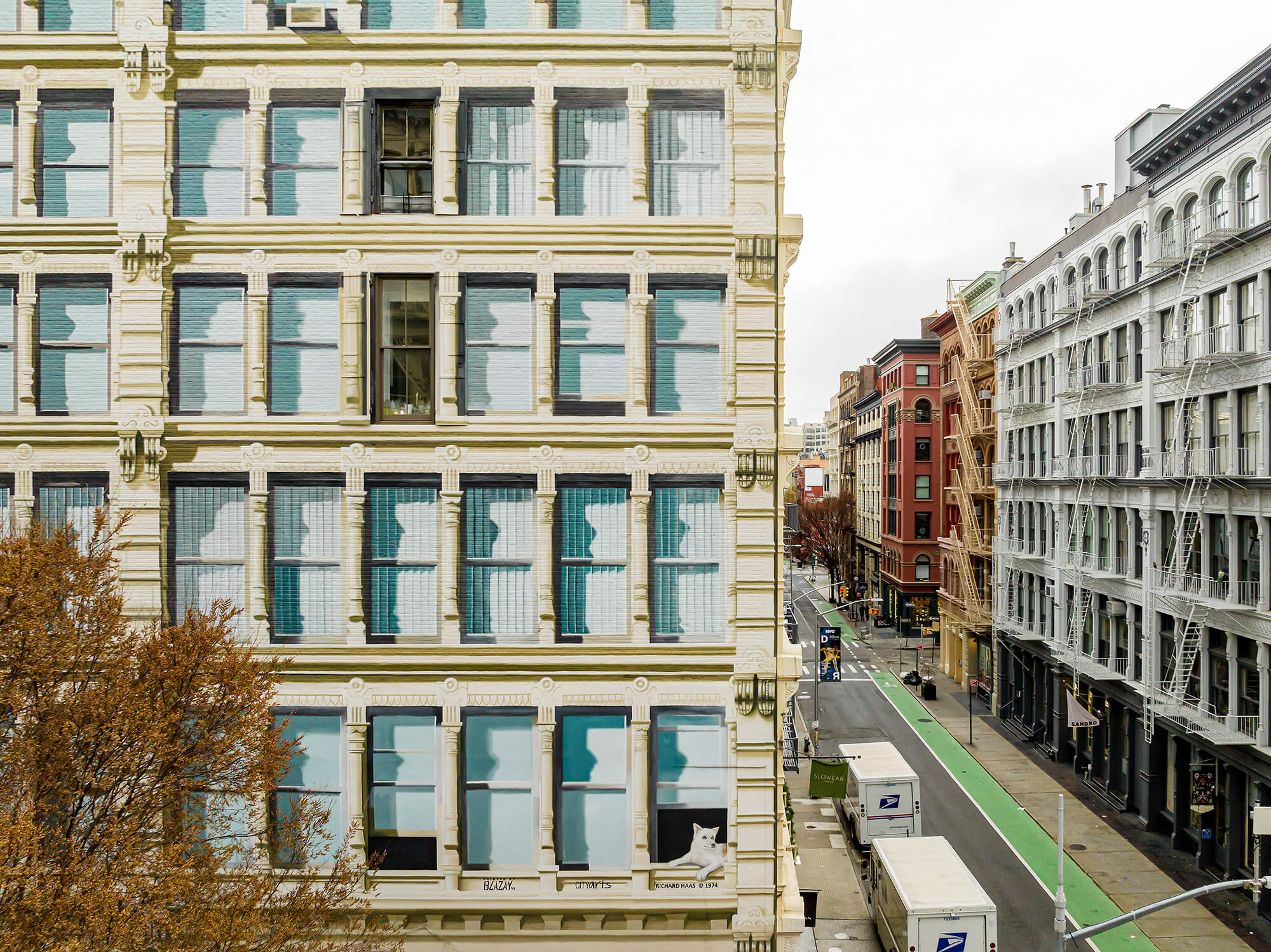
After 50 years, Haas now considers 112 Prince a career milestone. The monumental piece was one of the earliest, most public expressions of postmodernism in New York, completed at a time when figurative painting was taboo and geometric abstraction was king. It also led to the “creation of over 100 interior and exterior murals” in cities around the world, he said. Critic Kira Obolensky, writing in a 1987 issue of Architecture Minnesota, credited Haas’s Soho mural with bringing architectural painting back into the 20th century, a lost artform abandoned by modernism later championed by Denise Scott Brown and Robert Venturi.
The 75-foot-wide, 5-story high mural at 112 Prince Street is located on the side of a cast iron walkup built in 1890. Haas’s mural imitates a facade with 55 faux windows populated by a cat and a rescued dog from Aleppo, Syria. (Neither cat nor dog appeared in the original piece, but were inspired by real pets that presently live in the co-op.) The mural at 112 Prince recalls other works in Haas’s repertoire. Take for instance his impressive mural at Boston Architectural College, or Cincinnatus Trompe l’oeil, which he painted the following year, in 1975. “The idea of a classical fantasy is a theme that runs through many of these works” is how Goldberger summed them up in a 1989 review of Haas’s “healing” murals in The New York Times.
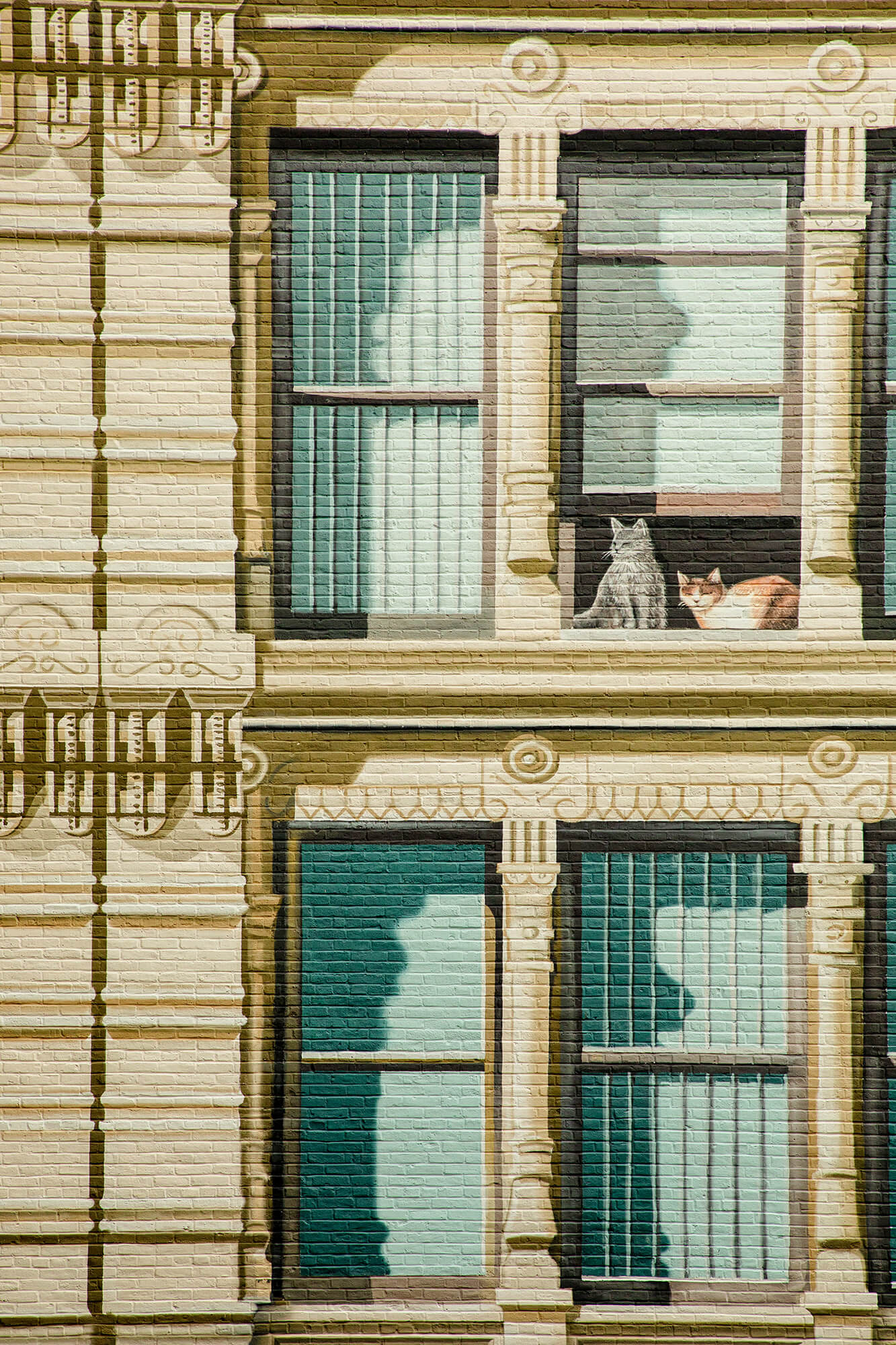
Many iconic 19th-century artists from Monet to Childe Hassam got their start as figurative masters, only later to become the abstract expressionists we know and love. Haas did the opposite. “When I was just out of school and working out of my Soho studio, I was an abstract painter like everyone else in those days. Then I became interested in figurative painting,” he recalled. “I wanted to document what was happening around me in New York, the falling apart buildings, the streets,” Haas continued. “This was also when West Coast realists were coming into play.”
Haas got one of his first big breaks in the early 1970s when he paired up with Doris Freedman, founder of City Walls, a nonprofit dedicated to public art, to reimagine a glum blank wall in what was then a very derelict Soho. At that time, Haas was interested in critiquing the rampant urban renewal happening around New York, he says. This was just a few years after Artists Against the Expressway (AAE), an action group led by Donald Judd and Barnett Newman, thwarted Robert Moses’s Lower Manhattan Expressway (LOMAX). Haas was an AAE member and helped fight the hulking highway that would have pancaked Soho, if not for the direct action taken by AAE, Jane Jacobs, and others.
By the early 1970s, prewar buildings just like 112 Prince were being demolished at warp speed, along with entire neighborhoods such as East Tremont in the Bronx; instances of urbicide that went unchecked thanks to the airtight grip Robert Moses held in New York power politics. (It’s certainly no coincidence that Robert Caro’s The Powerbroker was published the same year Haas’s Soho mural started.) “The future was rushing at us too quickly and we started to question what it would look like,” Haas would later write in his 1981 monograph published by Rizzoli.
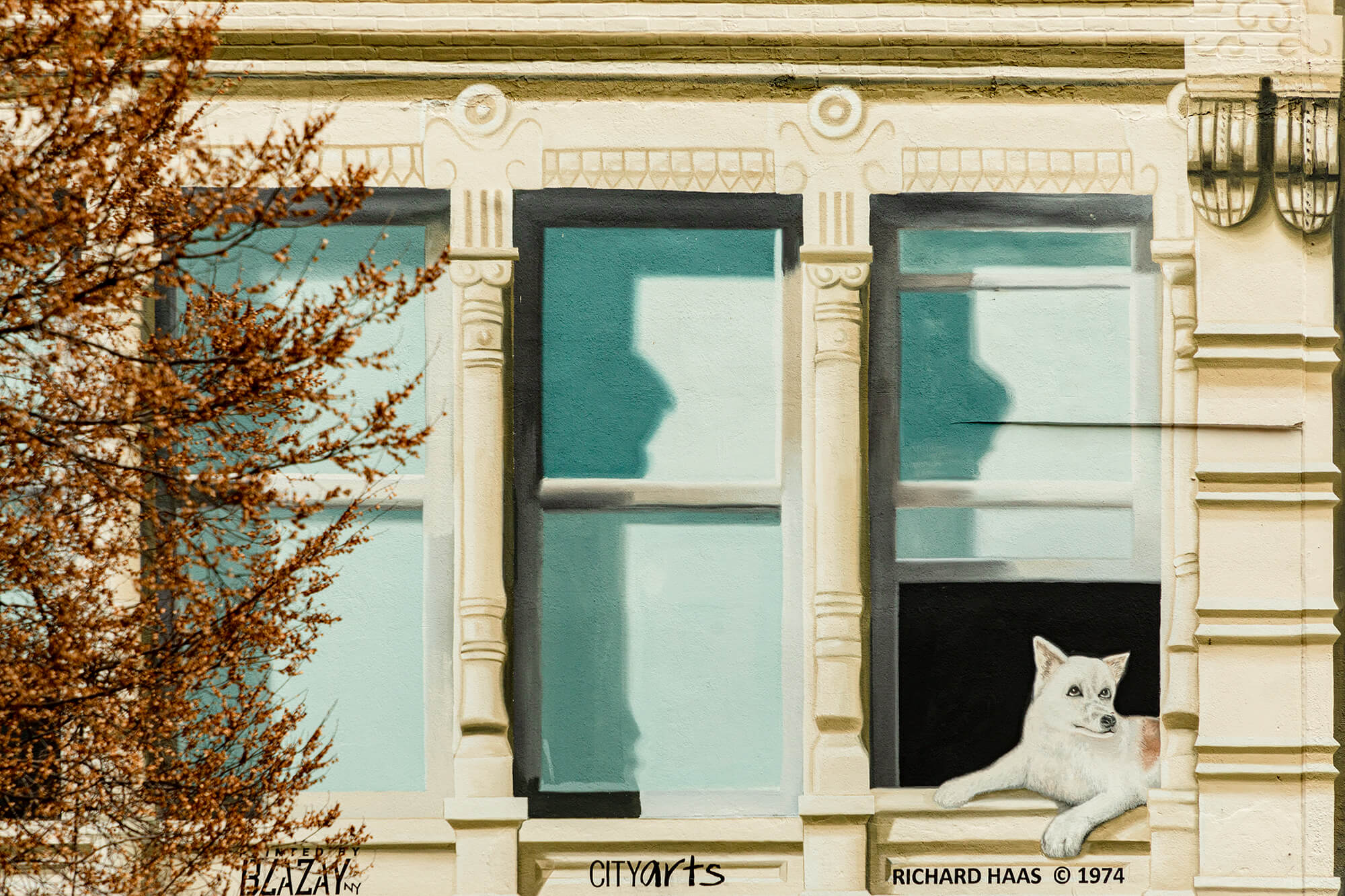
In 1974, Haas went to work on the blank party wall at 112 Prince and used it as a canvas to remind New Yorkers of what had been there: It was a critique of urban mayhem. He partnered with architect Hanford Yang, whose office was in the building at 112 Prince, to turn conceptual drawings of a 1:1 scale, faux–“neo-Grec” facade into design documents for painters to execute the job. At night, Haas and the painters would opine over the day’s work at nearby Fanelli’s Cafe.
When 112 Prince was finished in 1974, Haas’s expanse was met with mixed reviews. “It was like an atomic explosion in architecture,” he remembered. Indeed, 112 Prince was early evidence of the rise of postmodernism after abstraction, unveiled only six years after Complexity and Contradiction was published. Imagine: A monumentally scaled mural mimicking an 1890s cast-iron facade perched above a gaggle of Ivy League grads doggedly clinging to their Mondrian monographs and discussing Josef Albers over mint tea!
Still, critics like Goldberger applauded it. Writing for The New York Times, Ada Louis Huxtable said in 1976 Haas’s Soho mural was “an exercise in art and wit and instant architecture.” The painting even made an impression on then–New York City Mayor Ed Koch. “When Koch saw the mural, he said he wanted me to paint more of them all over the burnout buildings in the South Bronx,” Haas said. “I told him that that wasn’t a good idea, and that the South Bronx needed more important things.”
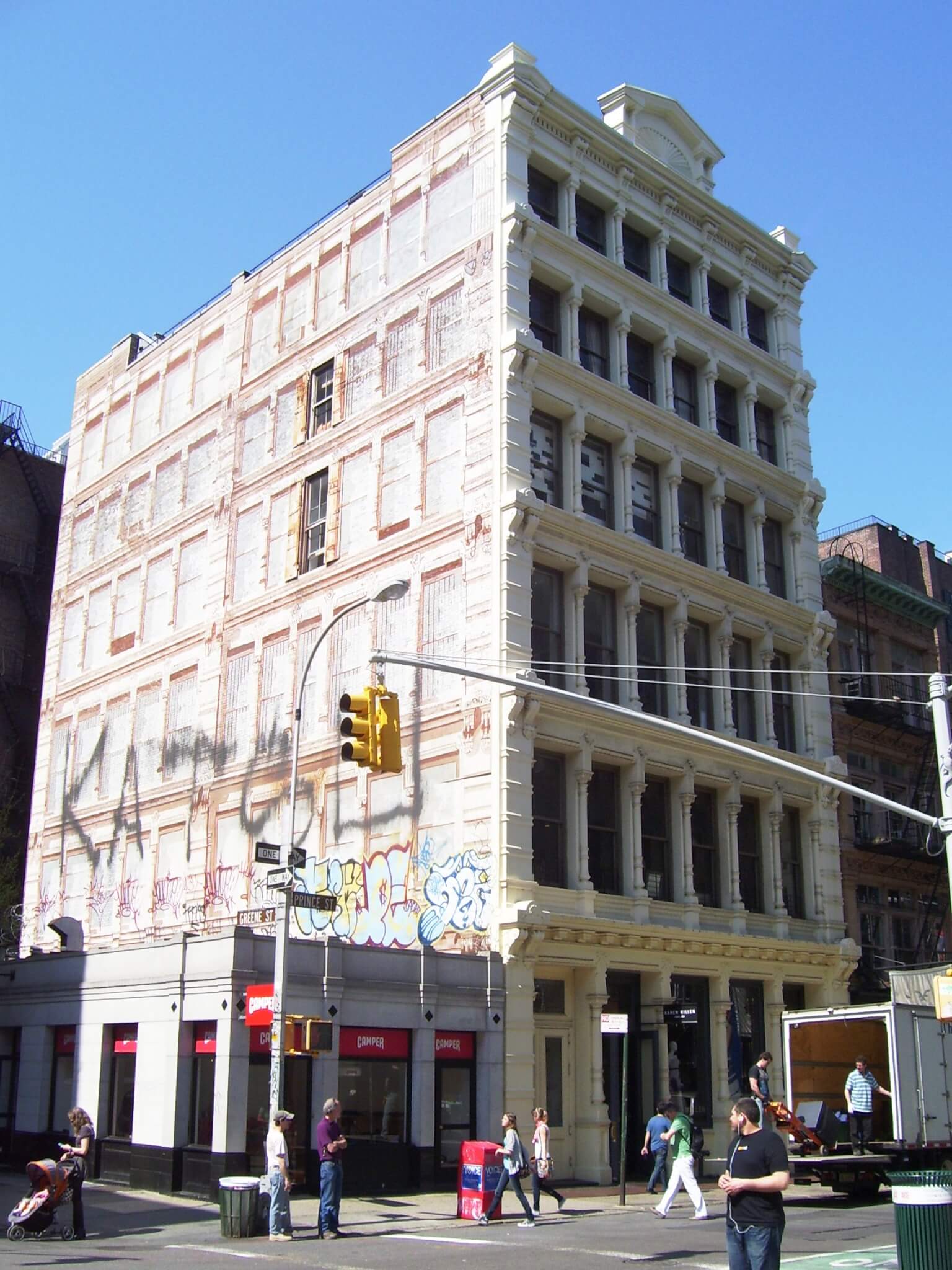
But the fanfare eventually faded, and time passed. And by the 2010s, much of Soho’s arts scene had died off, and the Louis Vuitton and Polo Ralph Lauren stores and the multi–million-dollar condominiums had moved in. “The former homes of a, b, c artists now host x, y, x luxury retail chain” is how writers typically sum up Soho’s gentrification. Today, the mural sits above a Camper store.
In 2015, Haas’s mural was in a sorry state, “chipped away by time and vandals,” wrote David Dunlap for The New York Times. Preservationist Kenisha Thomas, who wrote her 2013 thesis at Columbia GSAPP about Haas’s work, noted that, by the 2010s, almost half of Haas’s murals had been destroyed by developers, and many were at risk.
That year, it was estimated that $100,000 to 250,000 was needed to restore the postmodern masterpiece. From there, Haas’s studio went to work fundraising, applying for permits, hiring the scaffolders and sidewalk bridge team. David Walentas, the real estate magnate known for revitalizing Dumbo, gifted $100,000 for the project. The artist and his wife Katherine Sokolnikoff selected CITYarts, a 34-year-old public art and education nonprofit, as the restoration’s fiscal sponsor. Artist Robin Alcantara, a 30-year-old muralist from Yonkers, was hired to lead a small team of painters on the restoration, completed this November.
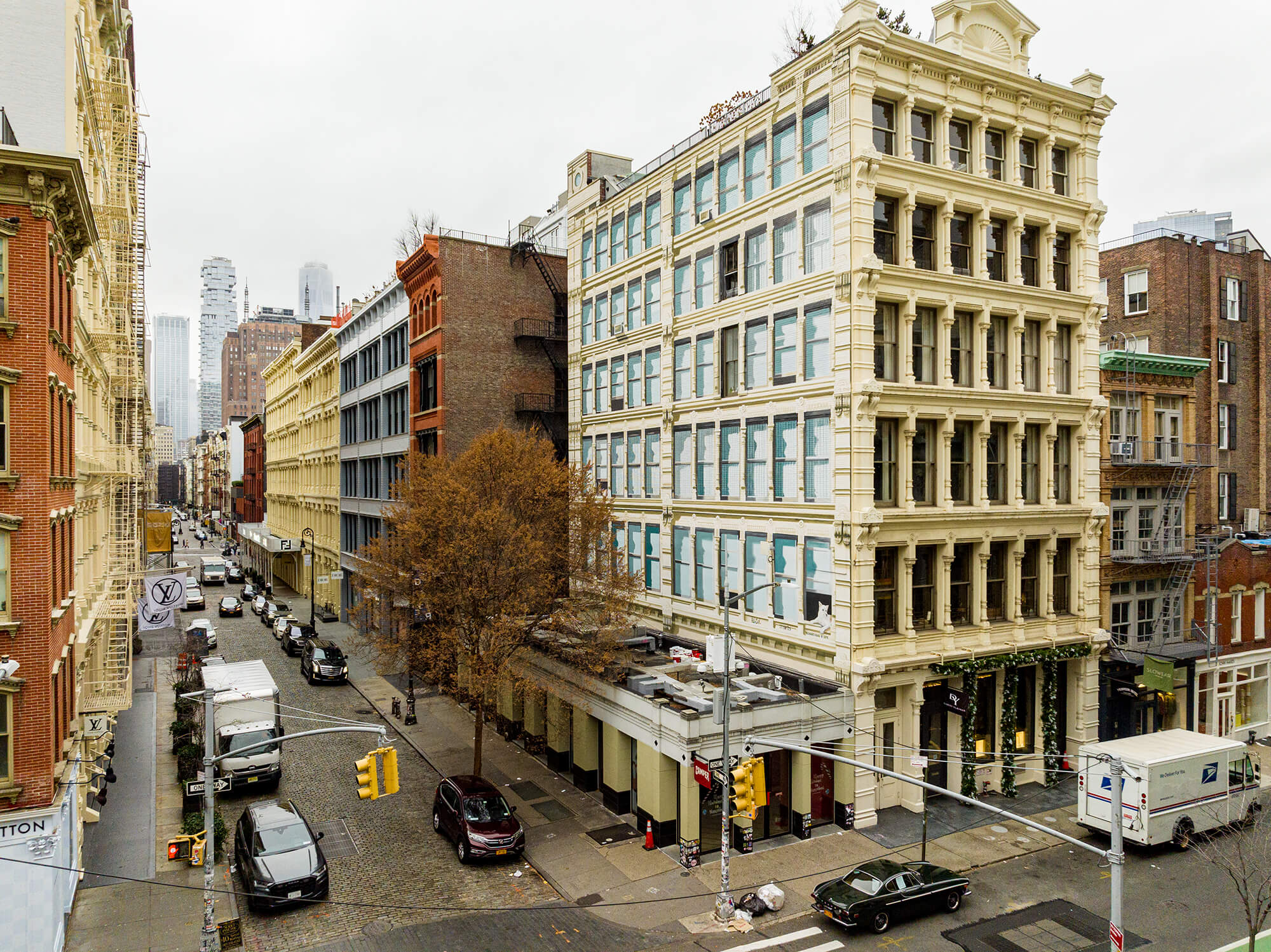
Thanks to a fresh coat of water-based paint, the mural has been restored, with the aforementioned non-human additions. Still, there’s something deliciously haunting about Haas’s mural, which should be understood with a compounded sense of historical meaning. Even half a century after its completion, 112 Prince still ruffles feathers in the neighborhood, albeit for different reasons. “A lot of people living in Soho really didn’t want me to restore the mural,” Haas said. “Economy is the determining factor that drives everything in the city today. Late capitalism is an era that’s all about the bottom line.”







